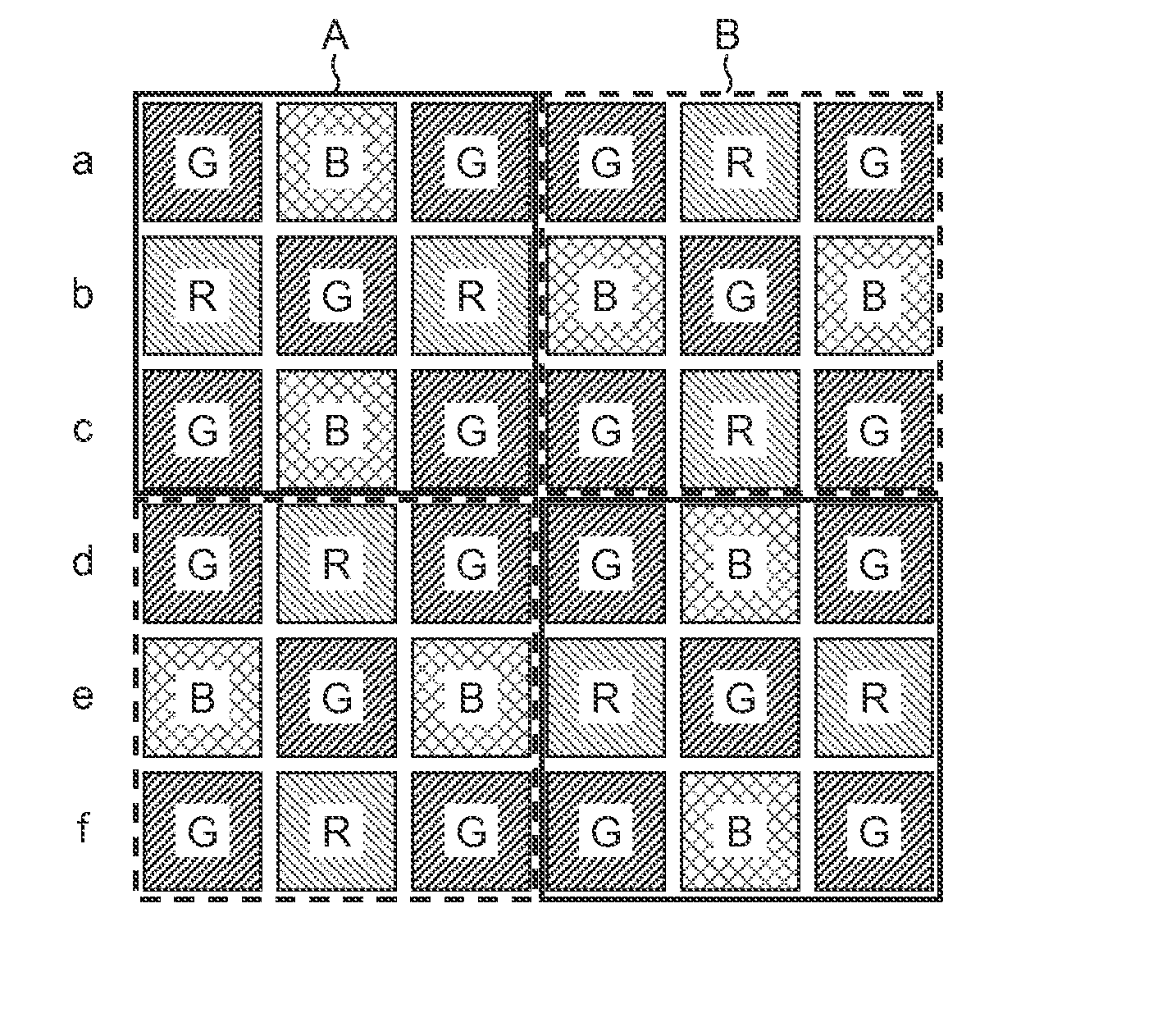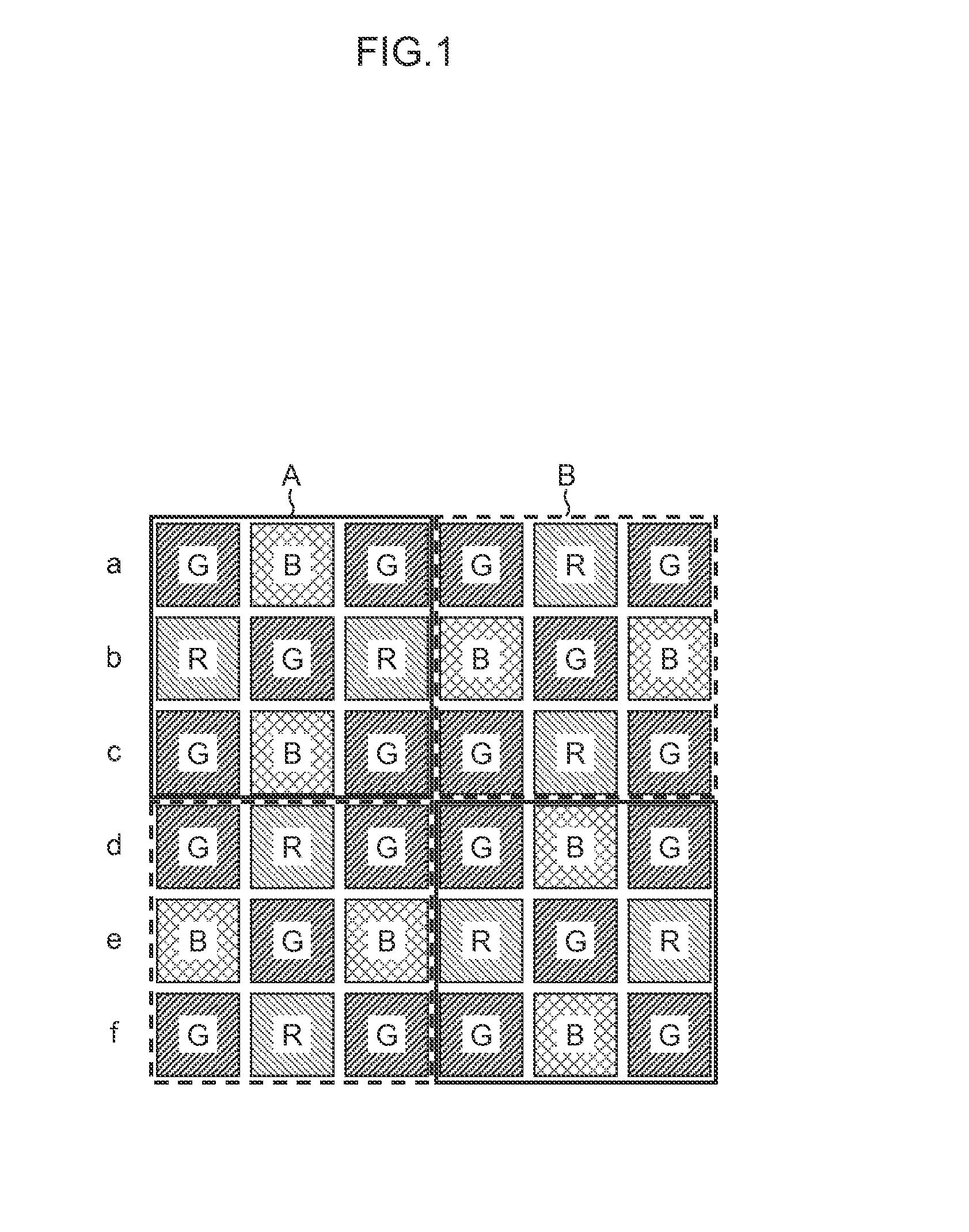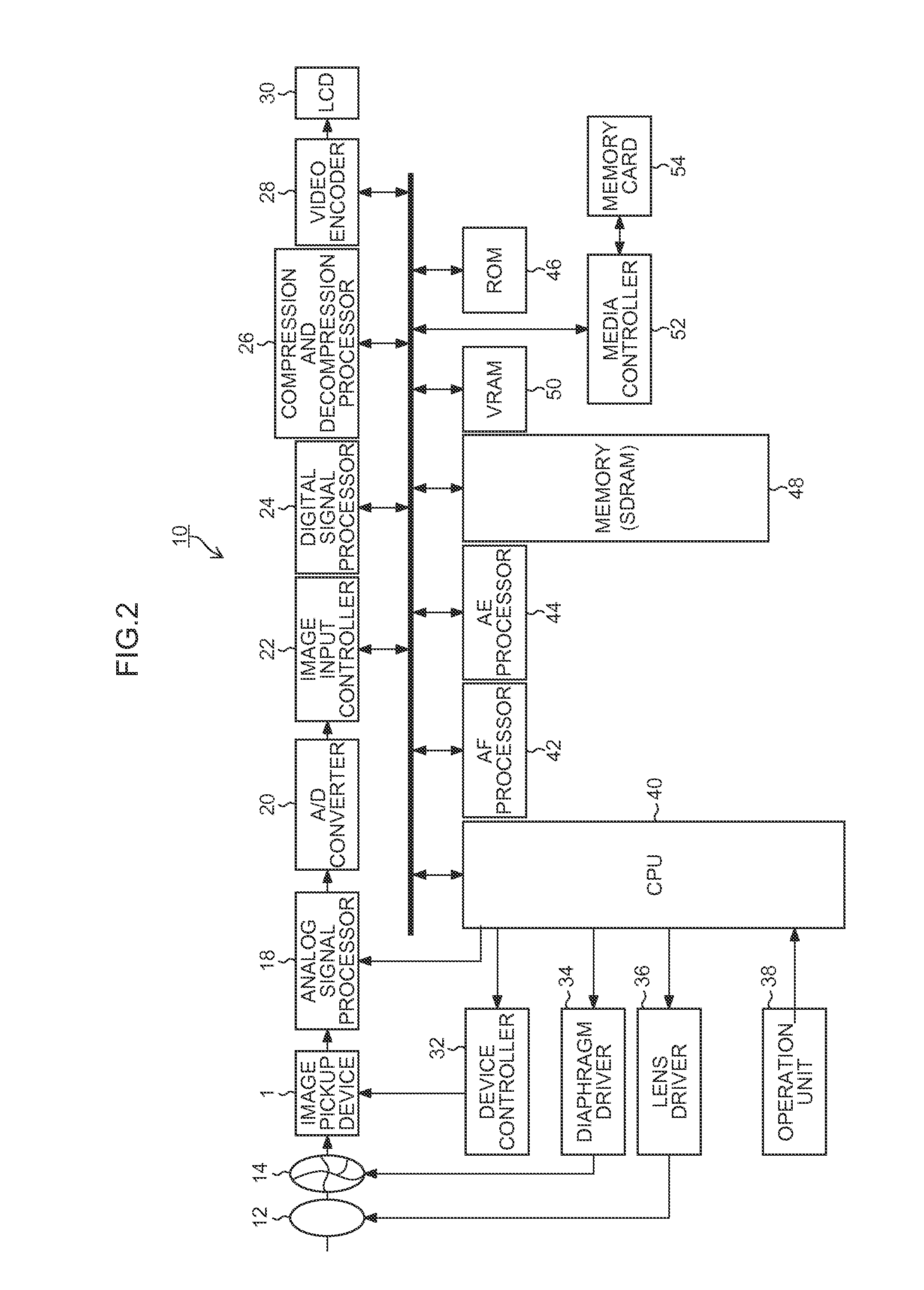Imaging apparatus
a technology of image processing and image processing, applied in the direction of color television details, color signal processing circuits, electrical apparatus, etc., can solve the problems of inability to accurately calculate wb gain, inability to perform thinning-reading susceptible to the like, and inability to calculate highly accurate wb gain having reduced adverse effects of color mixture, etc., to achieve the smallest amount of operation for calculating white balance gain, the effect of improving the reproducibility accuracy of a demo
- Summary
- Abstract
- Description
- Claims
- Application Information
AI Technical Summary
Benefits of technology
Problems solved by technology
Method used
Image
Examples
third embodiment
[0154]FIG. 12 is a flowchart showing a third embodiment of a method of calculating WB gains. The same step numerals are assigned to portions common to those of the first embodiment shown in FIG. 9. The detailed description thereof is omitted.
[0155]The CPU 40 calculates the brightness of a subject (imaging EV value) from the integrated values input from the AE detector 44 upon half-pressing of the shutter release button, determines an imaging (exposure) condition including the combination of an f-number, a shutter speed and an imaging sensitivity (ISO sensitivity) on the basis of the imaging EV value, and performs exposure control according to the exposure condition determined upon actual imaging.
[0156]If the brightness of the subject is high, the imaging sensitivity is set to be low, and exposure control is performed according to the f-number and the shutter speed. In contrast, if the brightness of the subject is low and a sufficient amount of signals cannot be acquired only with th...
fourth embodiment
[0159]FIG. 13 is a flowchart showing a fourth embodiment of a method of calculating WB gains, and represents a modified example of the third embodiment shown in FIG. 12. The same step numerals are assigned to portions common to those of the third embodiment shown in FIG. 12. The detailed description thereof is omitted.
[0160]In the fourth embodiment shown in FIG. 13, processes on and after determination that the imaging sensitivity exceeds the prescribed threshold (“No” in step S40) are different from those of the third embodiment.
[0161]That is, if it is determined that the imaging sensitivity exceeds the prescribed threshold in step S40 ((in the case of “No”), it is subsequently determined whether priority is given to the operation speed or not (step S50).
[0162]For instance, if a consecutive imaging mode is set as an imaging mode and each of consecutively taken images are required to be processed at high speed, it is determined that priority is given to the operation speed.
[0163]If ...
first embodiment
[0166]Not only a signal component corresponding to the intensity of incident light but also an offset component caused by dark current and the like are superimposed on the RGB color signals output from the image pickup device 1. In the cases of high sensitivity, high temperature, and long time exposure, a step tends to occur in an offset component owing to a dark current component in the pixels.
[0167]FIG. 14 is a diagram showing the case where a step (black level step) occurs in an offset in each of RGB colors.
[0168]To address this, highly accurate WB gains are calculated by calculating color information (R / G and B / G) in consideration of this offset step.
[0169]That is, the RGB integrator 246 shown in FIG. 8 calculates offset values Roffset, Goffset and Boffset for the respective RGB colors. These offset values Roffset, Goffset and Boffset are calculated by integrating signals that are in a light shield region (optical black portion: OB portion) at a peripheral portion of the image p...
PUM
 Login to View More
Login to View More Abstract
Description
Claims
Application Information
 Login to View More
Login to View More - R&D
- Intellectual Property
- Life Sciences
- Materials
- Tech Scout
- Unparalleled Data Quality
- Higher Quality Content
- 60% Fewer Hallucinations
Browse by: Latest US Patents, China's latest patents, Technical Efficacy Thesaurus, Application Domain, Technology Topic, Popular Technical Reports.
© 2025 PatSnap. All rights reserved.Legal|Privacy policy|Modern Slavery Act Transparency Statement|Sitemap|About US| Contact US: help@patsnap.com



